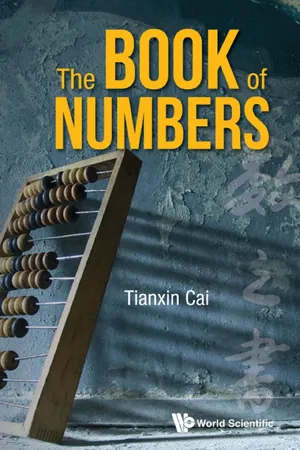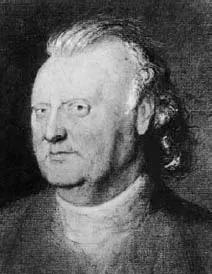
This is a test
- 368 pages
- English
- ePUB (mobile friendly)
- Available on iOS & Android
eBook - ePub
Book Of Numbers, The
Book details
Book preview
Table of contents
Citations
About This Book
Natural numbers are the oldest human inventions. This volume describes their nature, laws, history and current status. The first five chapters contain not only the basics of elementary number theory for the convenience of teaching and continuity of rea
Frequently asked questions
At the moment all of our mobile-responsive ePub books are available to download via the app. Most of our PDFs are also available to download and we're working on making the final remaining ones downloadable now. Learn more here.
Both plans give you full access to the library and all of Perlego’s features. The only differences are the price and subscription period: With the annual plan you’ll save around 30% compared to 12 months on the monthly plan.
We are an online textbook subscription service, where you can get access to an entire online library for less than the price of a single book per month. With over 1 million books across 1000+ topics, we’ve got you covered! Learn more here.
Look out for the read-aloud symbol on your next book to see if you can listen to it. The read-aloud tool reads text aloud for you, highlighting the text as it is being read. You can pause it, speed it up and slow it down. Learn more here.
Yes, you can access Book Of Numbers, The by Tianxin Cai, Jiu Ding in PDF and/or ePUB format, as well as other popular books in Biological Sciences & Science General. We have over one million books available in our catalogue for you to explore.
Information
Chapter VII
Additive and Multiplicative Number Theory
Additive number theory and multiplicative number theory are both important in number theory. Additive number theory is also called Dui Lei Su Shu Lun in Chinese by L.K. Hua (1910–1985), and he published a book with the title. As two branches of number theory, there are a few intersections between them. However, inspired by the form of the abc conjecture, we try to combine the addition and multiplication in Waring’s problem. We obtain a new class of Diophantine equations and some unexpected results. Later, this idea is gradually expanded, involving several classic number theory problems. Now we select six of them to study, including five classical number theory problems, and the last one is the abcd-equation, which is our creation. Recently, the Romanian-born Germany mathematician Preda Mihailescu published a survey article entitled Around ABC (Newsletter of European Math. Soc. 3 (2014) 29–35), and mentioned two of them. In a note he calls this kind of equations yin–yang equations.
31.New Waring’s Problem
In 1770, Lagrange showed (Section 17) that every positive integer can be expressed as a sum of at most four squares of nonnegative integers. The proposition was probably already known to Diophantus, since he gave some examples in his Arithmetic and later it was formally conjectured by the French mathematician and poet Bachet (1581–1638), who is the translator of the Latin version of Arithmetic (1621).

Portrait of English mathematician Waring
In his comments, Fermat claimed (as he did in Fermat’s last theorem) that he had proved this proposition, but no one found it. In the same year that Lagrange gave the proof, the English mathematician Edward Waring (1736–1798) asserted that for every k, there was a number s = s(k) such that every positive integer n can be expressed as a sum of s kth powers of positive integers, i.e.,

In the next 139 years, several special cases of Waring’s problem were solved, for example, k = 3, 4, 5, 6, 7, 8, 10. It was in 1909 that Hilbert finally solved the problem in the affirmative for all k. So Waring’s assertion is also called the Hilbert–Waring theorem. Once we know that...
Table of contents
- Cover
- Halftitle
- Title
- Copyright
- Preface
- Contents
- I. The Division Algorithm
- II. The Concept of Congruence
- III. Congruences
- IV. Quadratic Residues
- V. N th Power Residues
- VI. Congruences Modulo Integer Powers
- VII. Additive and Multiplicative Number Theory
- Appendix A The List of Prime Numbers Less Than 10000
- Bibliography